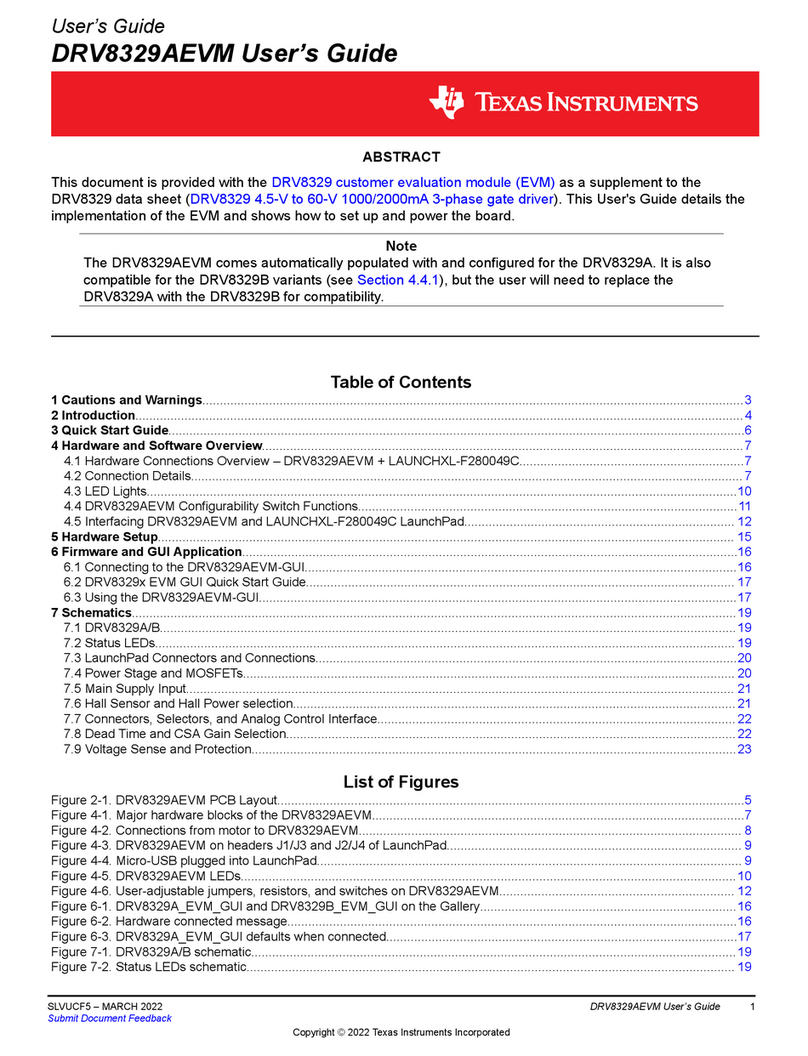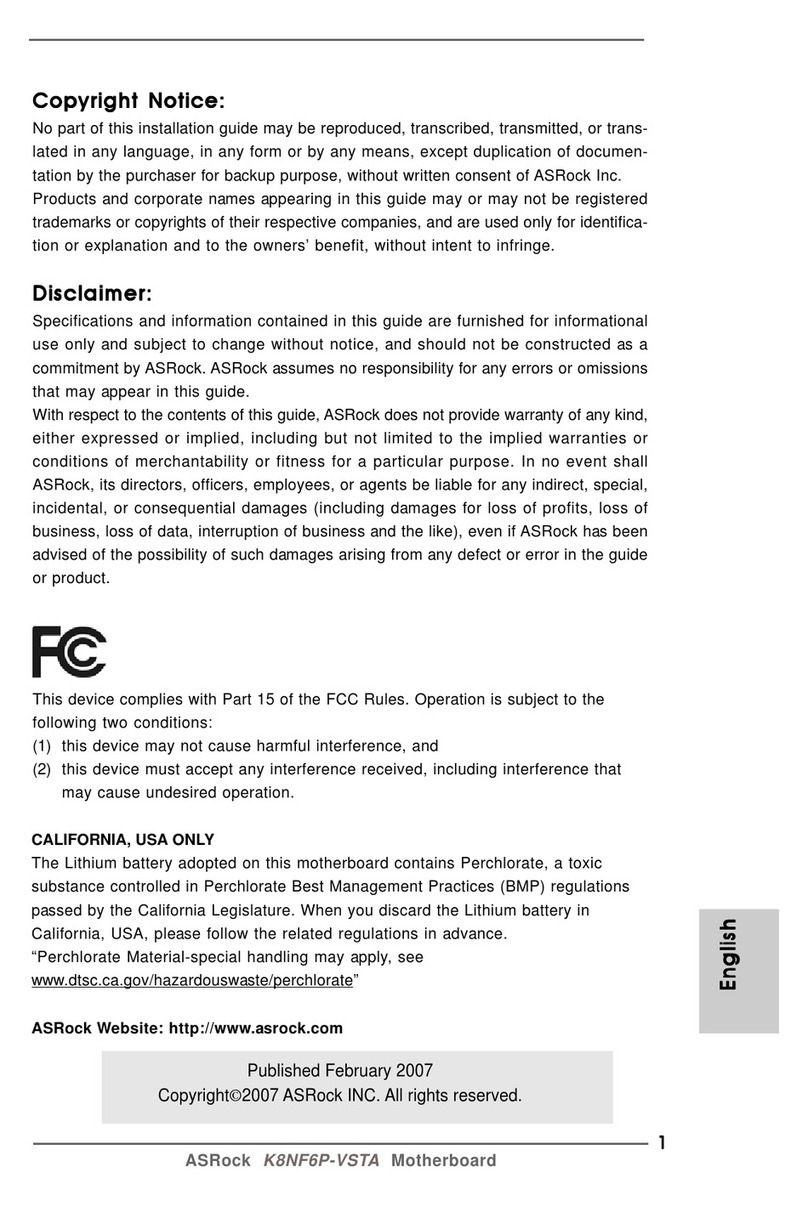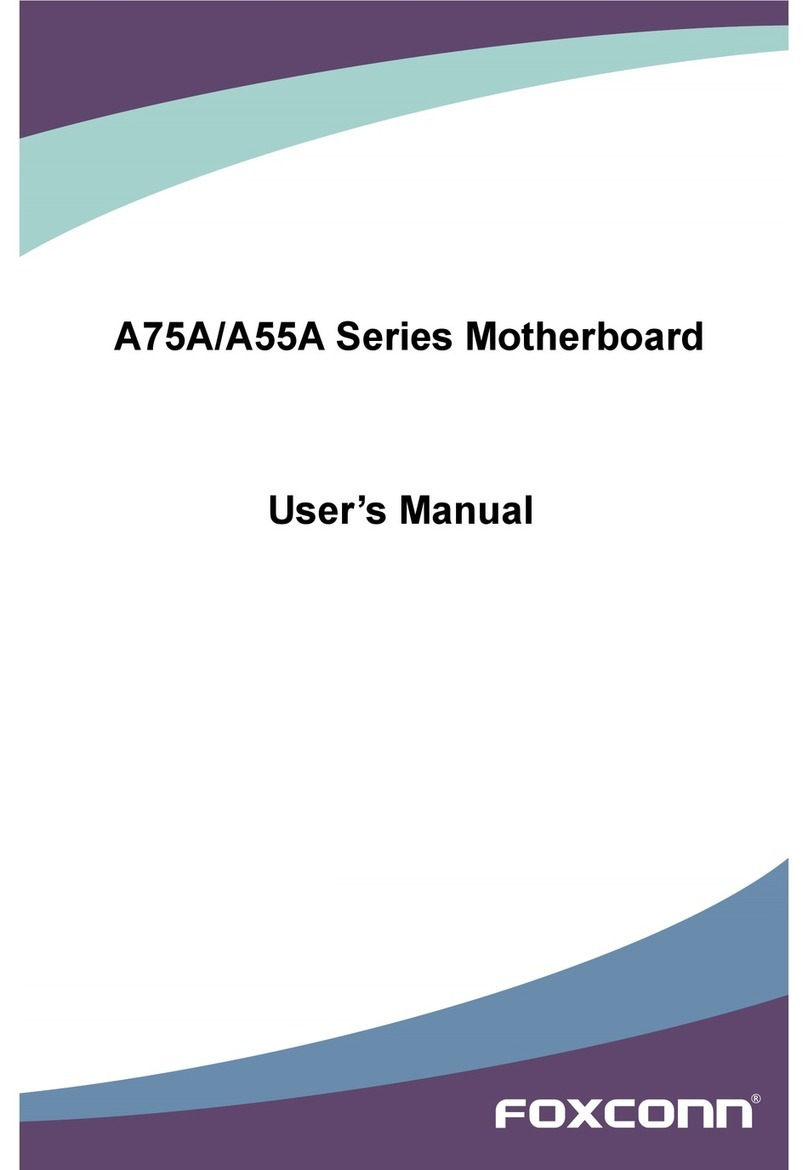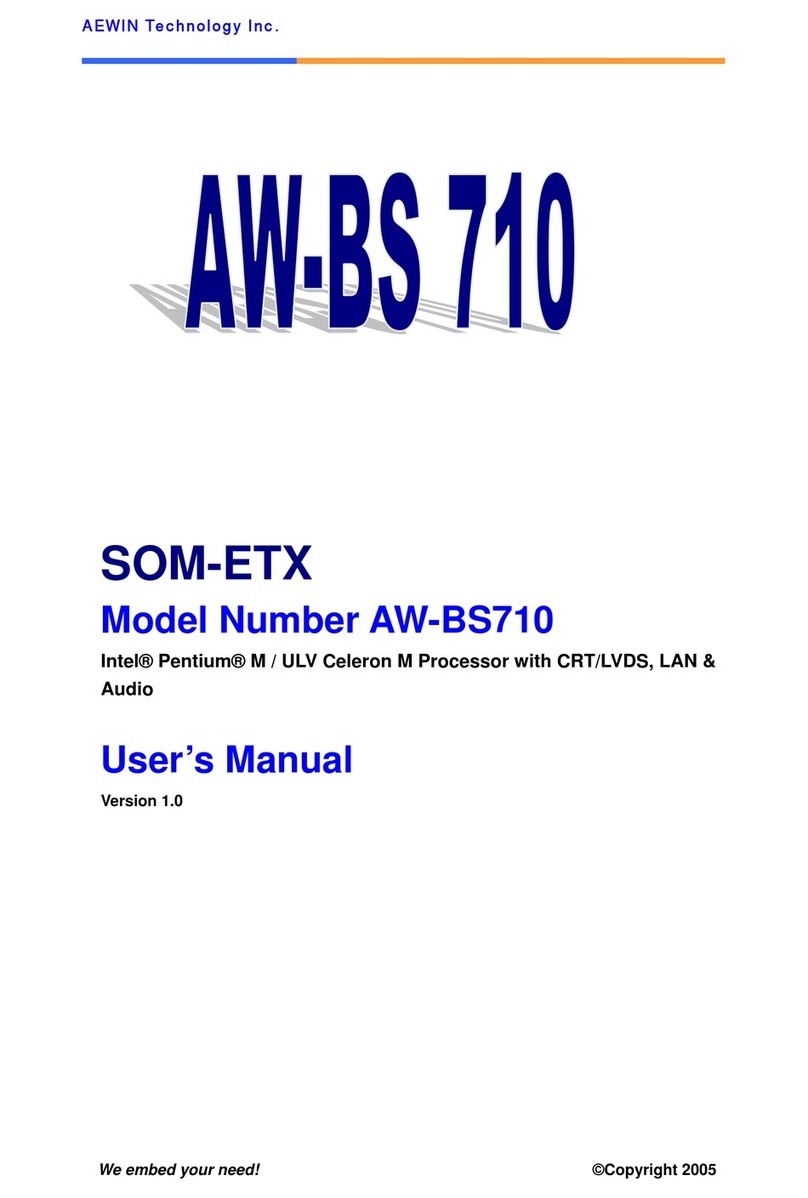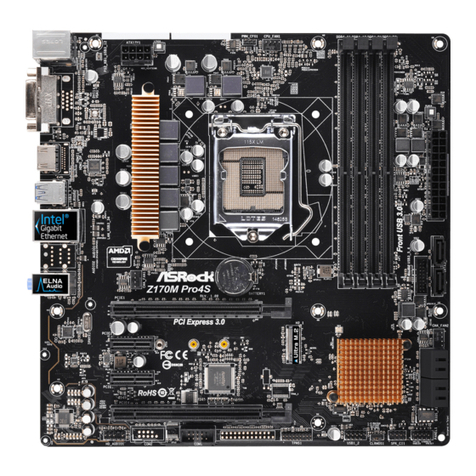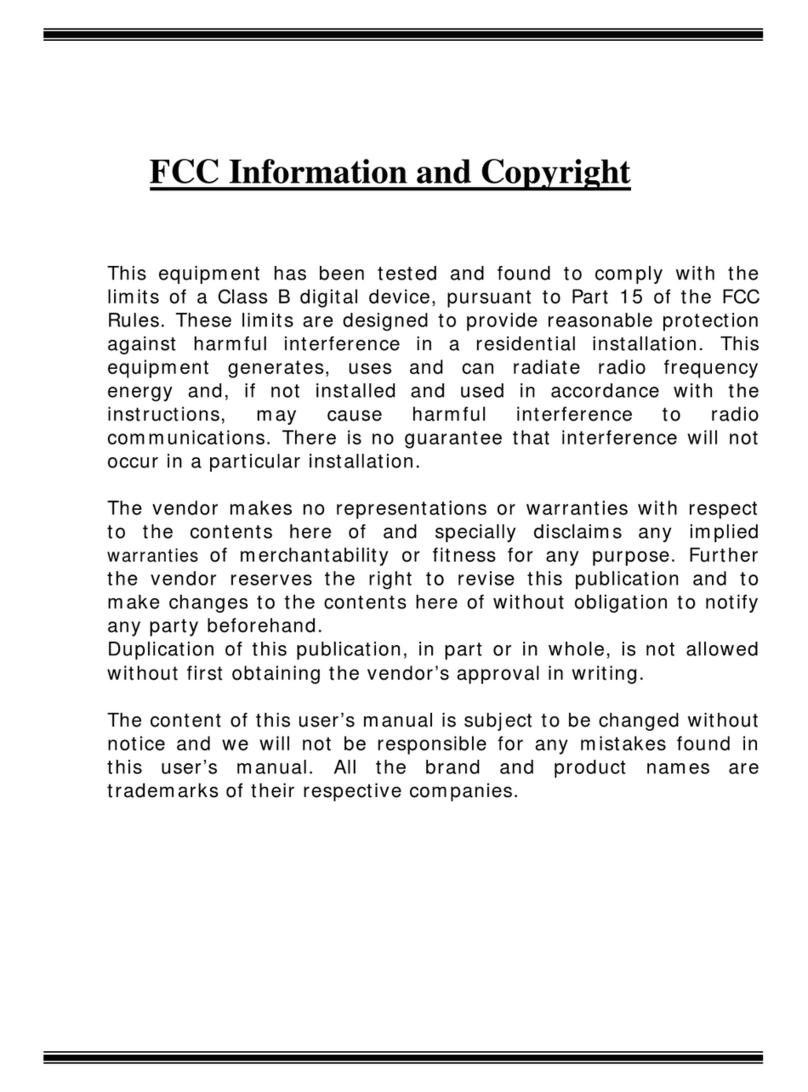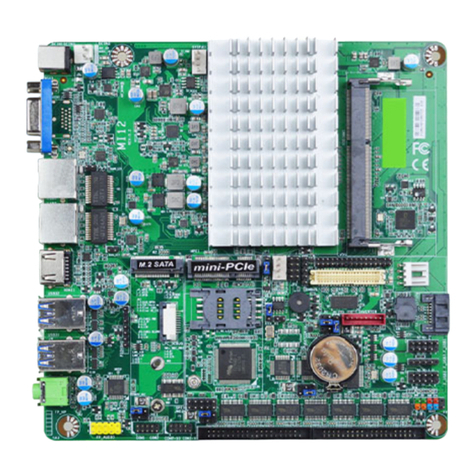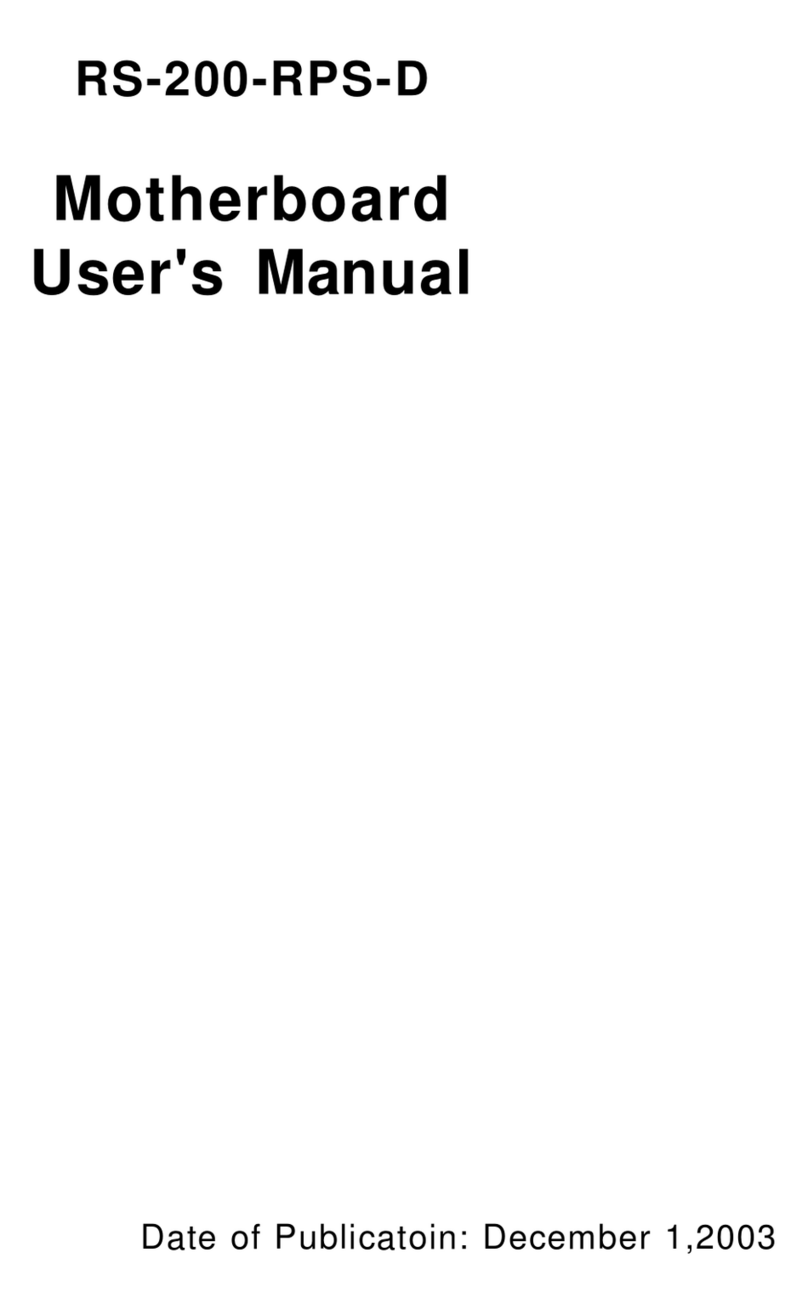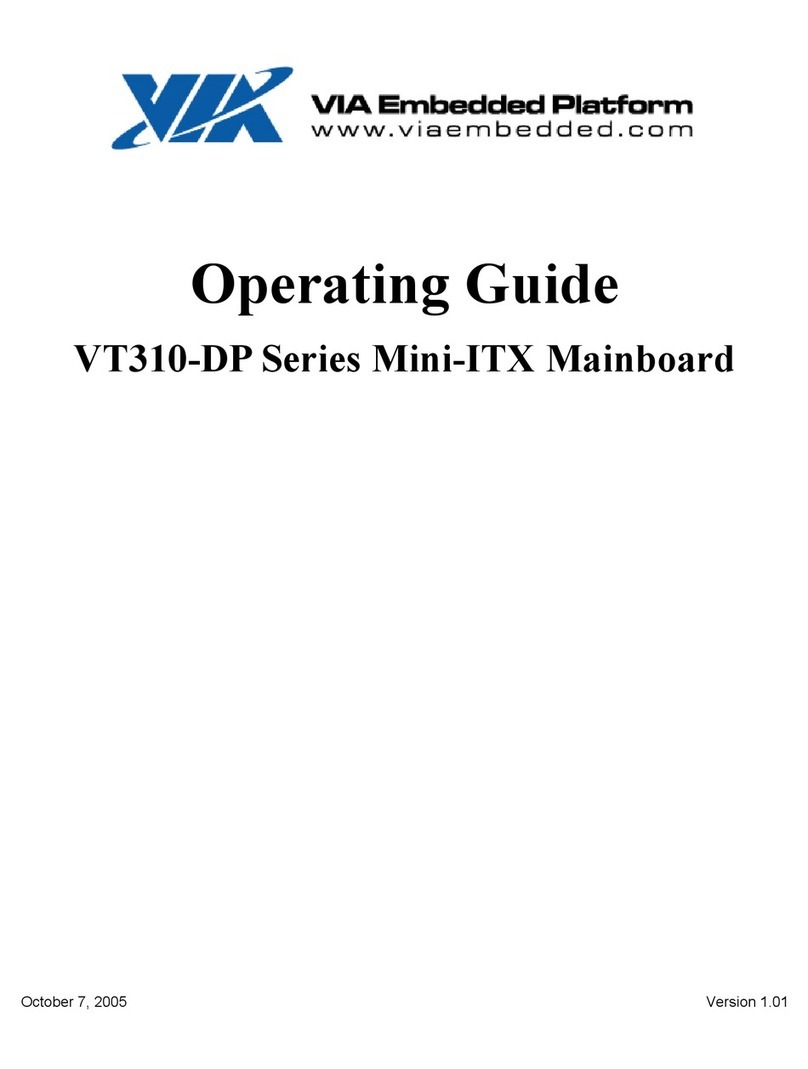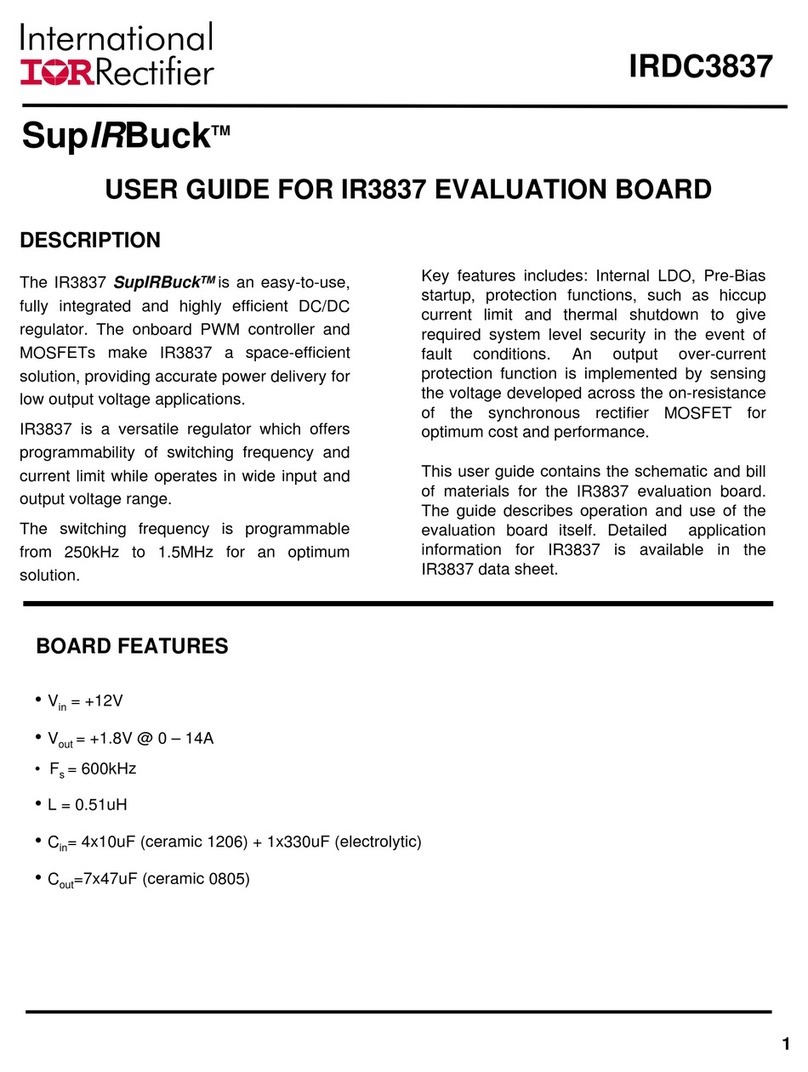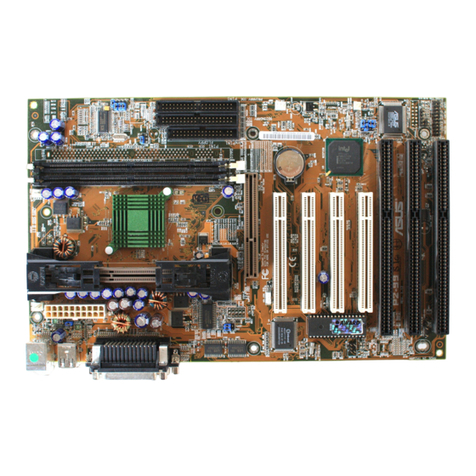Sistemes Electronics Progres AGRONIC diesel User manual

1
INSTRUCTION
MANUAL
INDEX
SEC THEME Page
1. BASIC FUNCTIONAL DESCRIPTION 1
2. INTRODUCTION 2
3. UNIT CHARACTERISTICS/DIMENSIONS 3
4. DIMENSIONS 3
5. CONNECTIONS 4
6. CONFIGURATION 6
7. USE 11
7.1. MAIN MENU 11
7.2. CONSULTATION 11
7.3. PROGRAMMING 12
7.4. CHANGE CLOCK TIME 12
7.5. MANUAL PROGRAMMES 12
7.6. MANUAL SECTORS 13
7.7. FERTILISATION TIME 13
7.8. STOP 13
7.9. PROGRAMME PATTERN 13
8. FUNCTION CHART 14
PRESENTATION
We wish to take this opportunity to thank you for
the confidence in us which you have demonstrated in
expressing interest or acquiring this unit.
This confidence, for our part, stimulates our
efforts to meet and surpass the expectations of our
clients to justify the traditional quality of our products.
This Manual will allow you to see the capacity of
the unit as well as its installation and use.
However, if after reading this you still have any
doubts, contact us and we will happily answer them.
1. BASIC FUNCTIONAL DESCRIPTION
The is an electronic programmer for
the control, start and stop of diesel, petrol engines
and generators.
It has got 4 inputs to: start/stop by external order,
conditional stop, oil pressure gauge or battery charge
(petrol) and securities such as levels, pressure
gauges, cylinder head temperature, etc.
It has also got 6 relay outlets: 3 for the start, stop
and engine ignition; and other 3 that can adopt one of
the following 7 combinations of outlets:
1ª. Fertiliser, Electropump, Breakdown indica-
tion. 2ª. Fertiliser, Warm-up, Breakdown indication.
3ª. Fertiliser, Electropump, Warm-up.
4ª. Warm-up, Electropump, Breakdown indica-
tion. 5ª. Sector 1, Sector 2, Electropump.
6ª. Sector 1, Sector 2, Breakdown indication.
7ª. Sector 1, Sector 2, Warm-up.
The screen displays information about the clock,
breakdown or conditional stop situation and working
times of the engine.
There are 5 time programmes of activation, with
programming of the frequency of the irrigation days,
the starting time and the length of the activation.
Other values that can be configured are:
• The post-irrigation time.
• The starting time.
• The number of starting attempts.
• The time between starting attempts.
• The length of the stop order.
• The delay between the effective starting of
the engine and the starting of the
electropump.
• The delay between the stop of the
electropump and the stop of the engine.

2
•The delays in the workings due to
breakdown detection and external start/stop
orders.
•Input no.1 used as Start or as Start/Stop.
•The fact of relating a time programme with
input number 1 (e.g. to start by time and
level).
2. INTRODUCTION
When installing the unit, the first step to take is
the feeding according to the CONNECTIONS chapter
of this manual (“feeding connection” and “common
connection”).
Then go to the CONFIGURATION chapter to start
it according to the specific needs of every case.
Use the codes, which appear at the frontal part of
the unit to enter data into the programmer or to
consult them.
The main menu is the starting point. Press the
“C” and “+” key at the same time to access it.
The sections of consultation, programming,
change of time, manual activation of programmes and
manual activation of sectors are accessed from the
main menu. The values displayed in these sections go
with an identifying code.
To choose an option from this menu, press the
“+” or “-“ keys until the screen shows the code of the
desired option. Press the “C” key to enter this option.
Press the “+” and “-” keys to modify the values
displayed on the screen, which increase or decrease
the value displayed in that moment. If the key is
pressed for more than two seconds, there is a fast
increase/decrease.
Press the “+” (YES) key to answer any question
in an affirmative way and the “-” (NO) key to answer in
a negative way.
Press the “C” key to confirm the displayed value
and change the parameter.
Press the “C” and “+” key at the same time to
leave the option where you are and go to the main
menu.
Figure 1. Keyboard

3
3. TECHNICAL CARACTERISTICS
Feeding
Power source 12Vdc +10% -5%
Energy consumption Consumption at stop: 48 mW
Maximum consumption: 1,2 W
Outlet fuse 4 A, F type, 250V (fast)
Outlets Inputs
Number 6Number 4
Type By relay contact, with 12
VDC power Type To be connected to
contacts free of power
Environment Weight (approximate) Memory backup
Temperature 0º C to 45º C 0,5 Kg Parameters,
programmes It can not be
erased
Humidity < 85 %
Height 2000 m.
Pollution Grade II
DECLARATION OF CONFORMITY
It follows the 89/336/CEE Guidelines for the Electromagnetic compatibility and the
73/23/CEE Guidelines of Low Tension for the Fulfilment of the Product Security. The
fulfilment of the specifications was demonstrated as indicated in the Official Diary of the
European Communities.
Symbols which can be displayed on the product. Double insulation
4. DIMENSIONS
Figure 2. –Unit dimensions All measures are in mm.

4
5. CONNECTIONS
5.1. FEEDING CONNECTION
Feed the unit at 12Vdc according to figure
number 4, taking into account the terminal polarity.
When feeding the unit, it will stop automatically.
Connect two direct cables from the battery to the
unit feeding terminals, avoiding that they feed other
parts.
The input is protected against overloads and
excess of power.
Avoid any diesel engine working without battery,
as the alternator would rise the feeding tension
momentarily.
5.1.1. COMMON CONNECTION
Install a direct cable from the battery terminal to
the input C of the unit.
5.1.2. INPUT CONNECTION
Read the CONFIGURATION chapter before using
inputs.
The unit has four digital inputs, which are
responsible of the start or stop of the engine and of
the detection of breakdowns. Their activation and
deactivation can be delayed using the corresponding
sections in Configuration.
§Input 1: Corresponds to the external orders of
START, or START/STOP, as indicated in the
configuration code number 14.
§Input 2: Corresponds to the external orders of
STOP or CONDITIONAL STOP as indicated in
configuration code 14. When there is a conditional
stop, the letters “P CO” are displayed on the
screen intermittently.
§Input 3: (this connection is indispensable for the
unit to work) Corresponds to DETECTION of
working motor and it must be connected to the oil
pressure gauge when there is a diesel engine, and
to the alternator outlet when there is a petrol
engine. When there is a petrol engine, it is
necessary to modify some internal jumpers
according to figure 3.
The oil pressure gauge lights when the
engine is not working and is not lit when it is
working.
If the unit conditions indicate that the engine
is working but input 3 is disconnected the engine
stops and the programme is deactivated. The
programmer goes to the consultation code C1,
showing the intermittent letters “PA” on the screen
until the “C” key is pressed.
If on giving the order of starting to the
engine, it detects that there is oil pressure (that is
to say, it does not receive a signal from the oil
pressure gauge through input 3), the programmer
understands that the motor is already working,
showing a “PA” intermittently on the screen and
activating the stop outlet.
The detection delay can be programmed at
the configuration code 11.
Figure 3. Configuration of the jumpers
Steps to do for work with petrol engines:
1.-Press the key + and -, at the same time that you
are connecting the feeding, and the unit will do
an output test.
2.-Once the test will be finished a flickering code
“‹‹1” will be shown.
3.-Pressing the “C” key the “‹‹1 no”. will appear
4.-And with the keys “+” and “-“ it will change to yes
or not. For diesel engine “NO” and for petrol
engine “YES”.
5.-To confirm the option press the keys “C” and “+”
at the same time.
§Input 4: Corresponds to BREAKDOWN. It is only
taken into account if the engine is working. When
it activates, the engine stops immediately, the
programmer goes to the consultation code C1
and the letters “EA” are displayed on the screen
intermittently. Programmes are deactivated and
will not start again after the breakdown. No
programme can be started until the “C” key is
pressed as this key deactivates the breakdown.
The detection delay can be programmed at the
configuration code 10.
5.1.3. OUTLET CONNECTION
Outlets are protected by a 4 A. fuse, F type.
Replace it with a similar one if it fuses.

5
•Outlet 1: Engine start. A supplementary relay, with
a capacity between 20 and 30 Amps, must be
inserted, connecting its outlet to the terminal cable
“50” of the key.
•Outlet 2: Engine stop. If the stop is done by
electromagnet, a supplementary relay is to be
inserted between the electromagnet and outlet 2.
If the stop is done by cutting the fuel with an
electrovalve, this valve is to be installed by the
injector, so that the stop takes place as soon as
possible.
When the electrovalve is normally open, it is
connected directly to output 2. If the electrovalve
is normally closed, it will be connected to outlet 3.
With the electrovalve normally open, this one is
closed during the final time of the working. If the
electrovalve is normally closed, thisone is opened
at the beginning of the working and closed at the
end.
•Outlet 3: Diesel engine ignition. It is to be
connected to the terminal cable “15/54” of the
key. The unit starts and stops itself, so the key has
to be left at rest.
•Outlets 4, 5 and 6: Their function will depend on
what is configured according to table number 1.
Figure 4. Unit connection with a diesel engine
Figure 5. Unit connection to a Figure 6. Fuse location
petrol engine

6
6. CONFIGURATION
The installer when starting the system does the
configuration.
Press the “+” and “-” keys at the same time to
access it. The “C” key is used to go from one code to
another and the “+” and “-” are used to modify values
as well as the YES and NO answers. Press the “C”
and “+” keys at the same time to escape
configuration and go back to the main menu.
The first configuration code to be completed is
coding number 16, which is used to configure how the
outlets have to work. There are 7 possible
configurations, as shown at Table 1. It is essential to
put a valid code in this section. If there is no valid
value, the programmer does not accept the petitions
of engine starting and the screen blinks constantly.
Table 1 Outlet configuration.
Configuration
number Outlet
number Outlet function
14
5
6
Fertiliser
Pump
Breakdown indication
24
5
6
Fertiliser
Warm-up
Breakdown indication
34
5
6
Fertiliser
Pump
Warm-up
44
5
6
Warm-up
Pump & unique sector
Breakdown indication
54
5
6
Sector 1
Sector 2
Pump
64
5
6
Sector 1
Sector 2
Breakdown indication
74
5
6
Sector 1
Sector 2
Warm-up
Figure 7. Configuration diagrams
The following graphics show the working of the
outlets according to the chosen option.
CONFIGURATION 1
CONFIGURATION 2
CONFIGURATION 3
CONFIGURATION 4

7
CONFIGURATION 5
CONFIGURATION 6
CONFIGURATION 7

8
Codes number 12, 13, 14 and 15 are the next codes to be configured. These codes will be completed according to the conditions that have to be fulfilled to start
and stop the unit workings.
In order to use this table correctly; first read the options until you find the one you are interested in. Then, complete the codes 12, 13, 14 and 15, following the
instructions for the chosen option.
Table 2. Configuration codes 12, 13, 14 and 15
What do you want to do?
a) Engine start just by programme: options 1, 2 and 3
b) Engine start just by external order: options 4, 5, 6 and 7
c) Engine start just external order and programme: options 7, 8, 9,10 and 11.
NOTES:
The Conditional Stop function interrupts both the working of the engine and the current programme, restarting when the signal stops. For example, if a sensor
is placed in a well where water is being pumped, and this sensor gives us a signal when there is no water, whenthis signal is received by the programmer through
input 2, the working will be interrupted until it stops. That is to say, until the sensor indicates that water is available in the well.
Detection delay at input 2
Start/stop function at input 1, or conditional stop at input 2
Detection delay at input 1
Engine only working if input 1 & a programme are activated
Options Input/s to be used Code 12 Code 13 Code
14 Code
15 On activating
input 1… On
deactivating
input 1…
On
deactivating
input 2…
On deactivating
input 2…
1.
The engine only starts
and stops by programme.
Use neither input 1
nor input 2.
-
-NO ----
2.
The engine starts and
stops by progra
mme, but it
can also stop by external
order.
Connect the
exter
nal stop
element to input 2.
-
Enter the number of
seconds that have
to go by before a
change is taken into
account at input 2.
NO NO --
The engine
stops. -
3. The engin
e starts and
stops by programme, with
conditional stop by external
signal.
Connect the
exter
nal stop
element to input 2.
-
Enter the number of
seconds that have
to go by before a
change is taken into
account at input 2.
YES NO --
The engine
working is
interrupted
(conditional
stop)
The engine
working is
re
started if any
programme or
sector is
activated.
4.
The engine starts by
ex
ternal signal (it can only be
stopped manually).
Connect the
exter
nal start
element to input 1.
Enter t
he number of
sec
onds that have to go
by before a change is
-NO NO The engine
starts ---

9
stopped manually). element to input 1.
by before a change is
taken into account at
input 1.
5.
The engine starts by
ex
ternal signal and stops
when this signal stops.
Connect the
exter
nal start
element to input 1.
Enter the number of
sec
onds that have to go
by before a change is
taken into account at
input 1.
-YES NO
The engine
starts The engine
stops --
6.
The engine starts by an
external signal and stops by
another one.
Connect
the
exter
nal start
element to input 1
and the stop one to
input 2.
Enter the number of
sec
onds that have to go
by before a change is
taken into account at
input 1.
Enter the number of
seconds that have
to go by before a
change is taken into
account at input 2.
NO NO
The engine
starts -
The engine
stops. -
7.
The engine starts by an
external signal and stops by
the same one, with
condi
tional stop by another
one.
Connect the
exter
nal start and
stop element to
input 1 and the
interruption one to
input 2.
Ent
er the number of
sec
onds that have to go
by before a change is
taken into account at
input 1.
Enter the number of
seconds that have
to go by before a
change is taken into
account at input 2.
YES NO
The engine
starts
The engine
stops, if there
is no active
programme.
The engine
working is
interrupted
(conditional
stop)
The engine
working is
re
started if input
1 is activated.
8.
The engine starts by
ex
ternal input only if a
pro
gramme is working. It
stops by programme end.
Connect the
exter
nal start
element to input 1.
Enter the number of
sec
onds that have to go
by before a change is
taken into account at
input 1.
-
NO YES
The engine
starts if there is
an activated
programme. ---
9.
The engine starts by
ex
ternal signal, only if a
prog
ramme is working. It
stops when this signal ends
or by end of programme.
Connect the
exter
nal start
element to input 1.
Enter the number of
sec
onds that have to go
by before a change is
taken into account at
input 1.
-YES YES
The eng
ine
starts if there is
an activated
programme.
The engine
stops, but the
programme is
not
deactivated.
--
10.
The engine starts by
external signal, only if a
pro
gramme is working. It
stops by another signal or by
end of programme.
Connect the
exter
nal start
element to input 1
and the stop one to
input 2.
-
Enter the number of
seconds that have
to go by before a
change is taken into
account at input 2.
NO YES
The engine
starts if there is
an activated
programme. -
The engine
stops, b
ut the
programme is
not
deactivated.
-
11.
The engine starts by
external signal, only if a
pro
gramme is working. It
stops when the signal stops,
being able to be interrupted
while another external signal
is received.
Connect the
exter
nal start and
stop e
lement to
input 1 and the
interruption one to
input 2.
Enter the number of
sec
onds that have to go
by before a change is
taken into account at
input 1.
Enter the number of
seconds that have
to go by before a
change is taken into
account at input 2. YES YES
The engine
starts if there is
an activated
programme.
The engine
stops, but the
programme is
not
deactivated.
The engine
working is
interrupted
(conditional
stop)
The engine
working is
re
started if a
pro
gramme and
input 1 are
activated.

10
The remaining codes are to be configured next.
Table 3 Configuration sections
CODE FUNCTION
01 Post-irrigation time: is the time in advance
the fertilisation must stop before the
irrigation. From 0 to 250 minutes.
02 Erase engine working time?: answer YES or
NO using the “+” or “-“ keys respectively.
03 Starting time: is the time the activation of the
engine takes. From 0 to 250 seconds.
04 Number of starting attempts: is the starting
attempts it will do while it is not detected
that the engine has started. From 1 to 9.
05 Time between starts: is the pause left
between the starting attempts. From 0 to
250 seconds.
06 Warm-up time: (only for those who need it).
From 0 to 250 seconds.
07 Stop time: duration of the electrovalve
activation (N.A.), or the electromagnet, to
stop the engine. From 0 to 250 seconds.
08 Time between engine and pump starts:
(only for generators) is the time it will wait
before the electropump is activated, from
the time the engine was started.
09 Time between pump and engine stops:
(only for generators) is the time that will go
by from the electropump stop to the engine
stop. From 0 to 250 seconds.
10 Delay in the breakdown detection: indicate
how long input 4 must be activated for the
programmer to recognise that a breakdown
has taken place and the engine is stopped.
From 0 to 250 seconds.
11 Delay in the detection of engine breakdown:
indicate the delay in the detection of input 3,
in order to detect a breakdown in the oil
pressure (diesel) or in the battery charge
(petrol). From 0 to 250 seconds.
12 Delay in the activation of input 1 (Start or
Start/Stop, according to code 14). From 0 to
250 seconds.
13 Delay in the activation of input 2 (Stop or
Conditional Stop, according to code 14).
From 0 to 250 seconds.
14 Functions inputs 1 and 2: Answer YES if
input number 1 is to work as start/stop and
input number 2 as conditional stop (or it is
not going to be used). Answer NO if input
number 1 is to work only as start and the
stop is to be done by input number 2.
15 Engine only working if input 1 and
programme are activated?: answer YES or
NO, according to table number 2.
16 Outlet configuration: according to table 1.
From 1 to 7.
NOTES:
At code 15, if the programme arrives before the input, this
one is activated and it proceeds as if the engine was working
(programme time goes on). In this way, if input number 1 is
activated after the programme has been activated, the remaining
irrigation will take place. In the same way, if the engine stops
because there is no signal at input 1, and it appears again, the
engine will start again. But this code is not respected if the
programme or sector activation has been done manually. In this
case, whatever the answer to this question is, the engine starts
and if there is another stop, the programme is deactivated.

11
7. USE
This chapter is normally used by the user to
programme his/her Agrónic Diesel, once the
connections and the configuration have been done by
the installer.
7.1. MAIN MENU
The main menu is the first thing displayed on the
screen when the programmer is fed.
Two letters are displayed at the central part of the
screen. These letters represent the possible options.
Use the “+” and ”-“ keys to go from one option of the
menu to the next one. Use the “C” key to enter the
sections of the displayed option.
Example 1.-Main Menu screen
C
O
The following table shows the meaning of the
letters which appear in the main menu.
Table 4 –Main Menu options
MENU FUNCTION
CO Consultation
P1 Entry of the values of programme 1
P2 Entry of the values of programme 2
P3 Entry of the values of programme 3
P4 Entry of the values of programme 4
P5 Entry of the values of programme 5
HO Change clock time
AP Manual activation or stop of programmes
AS Manual activation or stop of sectors
Press the “C” and “+” keys at the same time to
go back to the Main Menu from any option.
Every option of the menu has one or more
sections. In order to identify these sections, a letter,
indicating the option we are in, and a number,
identifying every section of the option, are displayed at
the left of the screen. If an option has just got one
section, the code corresponds to the letters of the
option.
The meaning of every code and its sections are
going to be explained in detail in the following points
of the manual.
7.2. CONSULTATION (Cx)
At Consultation we can see the general state of
the programmer (breakdowns, conditional stop, time)
and, specially, all the information about the evolution
of the programme which is activated.
Table 5 –Consultation option sections
CODE FUNCTION
C1 Unit time, breakdown, conditional stop.
C2 Time left before the first sector is activated.
C3 Time left before the second sector is
deactivated.
C4 Activated inputs.
C5 Total time the engine has been working.
Press the “C” key to go from one code to the
next one. Press the “C” and “+” keys at the same time
to go back to the main menu.
-Code C1: Under normal conditions the unit clock
time is displayed. If there is a conditional stop, the
letters “P CO” would be displayed. If there is a
breakdown in the unit: “EA” will appear. if the
breakdown comes from input 4; “AA” will appear. If
the start attempts of the engine have gone by
without being able to start it (the number of start
attempts is configurable) and “PA” will be
displayed if, on starting the engine, it is detected
that the engine has been started without using the
programmer or a stop in the engine is detected
when it should be working.
When anomalies are displayed on the screen,
their initials blink.
-Code C2: It shows, in hours and minutes, the time
left for the working of the first sector to finish. If the
programme or sector have been activated
manually, a spot appears to the left of the time.
Example 2.-Consultation screen
C2
.0
1
:1
2
-Code C3: It shows, in hours and minutes, the time
left for the second sector to finish. If the
programme or sector have been activated
manually, a spot appears to the left of the time.
-Code C4: It shows the input state, independently of
the programmed delays for every one of them. The
input number appears if it is activated and a dash if
it is not.
-Code C5: It shows the total number of hours the
engine has been working. The maximum number is
9999, after this number it starts again at 0. A spot is
displayed to the left of this number if the

12
programmer has started the engine. This spot does
not appear if the engine has been started without
using the programmer.
This count can start again at 0 using the
“configuration -code 3”.
7.3. PROGRAMMING (Px)
The desired values for every one of the five
possible programmes are entered at Programming.
The programming is divided into five options in the
main menu: P1, P2, P3, P4 and P5. Choose the option
according to the programme to be acceded. There are
the same sections within each section.
Table 6. Programming option sections
CODE FUNCTION
P1 How often it activates.
P2 Days left until the following activation.
P3 Starting time.
P4 Activation time of the first sector.
P5 Activation time of the second sector.
Press the “C” key to go from one section to
another. Press the “+” and “-” keys to modify values.
Press the “C” and “+” key at the same time to go
back to the Main Menu.
-Code P1: The activation frequency is to be entered
in days, that is to say, the number of days this
programme has to be activated. If number 1 is
entered, the programme will be activated every
day, if number 2 is entered, it will be activated one
day yes, one day no, etc. The maximum is 15 days.
If a 0 is entered the programme will never be
activated automatically.
Example 3.-Programming screen
P
1
0
3
-Code P2: To change the days that are left before
the programme is activated. For example, if it is to
be activated every 7 days, but we want it to activate
tomorrow, a 1 is to be entered, which means that
there one day left for it to activate. With a 0, the
programme is activated on the current day. This is
the only section which is updated by the unit every
day.
-Code P3: The time of the day when the programme
is to start working is indicated here, in hours and
minutes. When the programmer clock reaches this
time, the programme will be activated, starting the
engine if it is not working in this moment. If the
engine is working, it would mean that a programme
has not finished yet or a sector has been activated
manually. Whatever the problem is, the new
programme is the one which is taken into account,
not paying any attention to the previous one. The
00:00 starting time is not valid.
-Code P4: The duration, in hours and minutes, of
the activation of sector number 1 is to be entered
here. The maximum time is 23:59.
-Code P5: The time, in hours and minutes, sector
number 2 has to be activated is to be entered here.
The maximum time is 23:59.
7.4. CHANGE CLOCK TIME (HO)
In this option there is just one section, HO, which
displays the programmer clock time. This time can be
changed with the “+” and “-“ keys. Press the “C” and
“+” keys at the same time to go back to the Main
Menu.
7.5. MANUAL PROGRAMMES (AP)
In this option there is just one section, AP. Use
the “+” and “-“ keys to select the programme number.
Then, press the “C” key to stop the selected
programme if it is working or to start it if it is stopped.
The number of the selected programme goes to 0
waiting for the selection of a new programme.
When a programme is selected, a spot on its left
indicates that the programme is already activated.
If the programme which is to be started lacks any
of the basic parameters to be activated (Time 1 in the
case of a fertilisation, for example), the programme
order of start will not be taken into account and the
programmer does not display a 0 in the number of the
selected programme.
If a programme is activated manually when
another one is already working, the one which is
working is deactivated and the one which was
activated manually starts to work.
The fact of activating a programme manually
does not affect the days that are left for the
programme to be activated.
A spot appears at the left of the displayed time at
the consultation codes C2 and C3, to indicate that the
programme has been activated manually.
Press the “C” and “+” keys at the same time to
go back to the Main Menu.
Manual programmes are not affected by the
“configuration -code 15” value and are activated
independently of the state of input 1.

13
7.6. MANUAL SECTORS (AS)
This option has just got one section, AS. The
screen displays a number which corresponds to the
sector number which has to be used. Use the “+” and
“-“ keys to modify it. Press the “C” key to activate the
sector if it is stopped and vice versa.
If the programmer is at conditional stop, sectors
can be neither activated nor deactivated manually.
Also, if a sector activation which is not valid is done (at
fertilisation, activation of sector number 2 without
number 1 being activated, for example), it is not taken
into account.
A spot at the left of the sector number indicates
that this sector is already working.
A spot appears at the left of the displayed time at
the consultation codes C2 and C3, to indicate that the
programme has been activated manually. The
displayed time will be 00:00, making it different from a
manual programme. Press the “C” and “+” keys at
the same time to go back to the main menu.
If the engine is started by the activation of input
1, the first sector will appear as activated (as this is
so), but it can not be deactivated manually while input
1 is activated.
7.7. FERTILISATION TIME
This section is only to be taken into account if the
unit uses irrigation with fertiliser.
Post-irrigation is the time there must not be
fertilisation before the end of the irrigation, in order to
clean the pipes (Configuration -code 1-).
The fertilisation will be started when the
fertilisation time plus the post-irrigation to finish the
irrigation is left. If the addition of both times is superior
to the irrigation time, fertiliser will be injected during
the whole irrigation.
7.8. STOP
Press the “C” and “-” keys at the same time for a
sudden stop of the engine, stopping any activity which
is taking place. A blinking STOP message will be
displayed on the screen. The unit is to be activated
manually.
In this way, the programmer only allows
consultations and change of parameters and
programmes, but any engine start order is not taken
into account. The screen also keeps blinking to
indicate the STOP state.
Press the “C” and “-” keys at the same time to go
back to the automatic working of the unit. The screen
stops blinking and the start orders are taken into
account again.
7.9. PROGRAMME PATTERN
PROGRAMME 1
How often it activates
Starting time
Time 1
Time 2
First activation date
PROGRAMME 2
How often it activates
Starting time
Time 1
Time 2
First activation date
PROGRAMME 3
How often it activates
Starting time
Time 1
Time 2
First activation date
PROGRAMME 4
How often it activates
Starting time
Time 1
Time 2
First activation date
PROGRAMME 5
How often it activates
Starting time
Time 1
Time 2
First activation date

14
8. FUNCTION CHART
Table of contents
